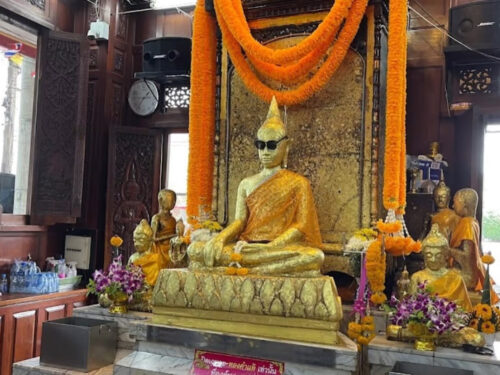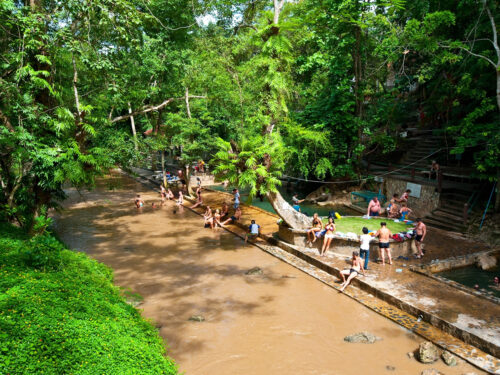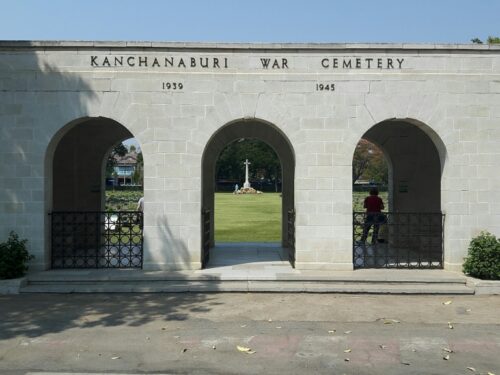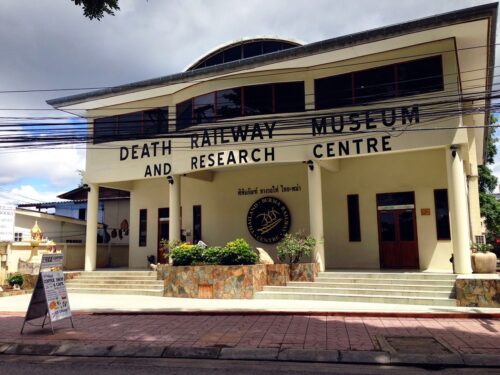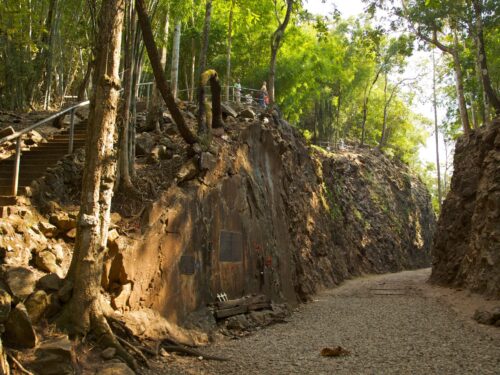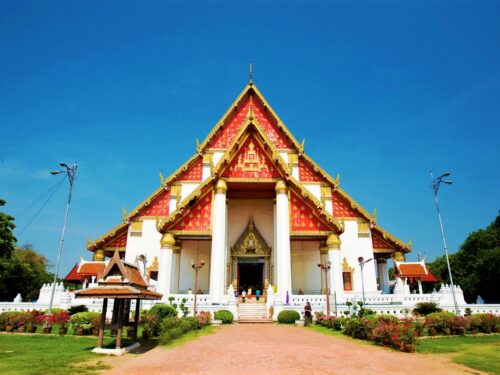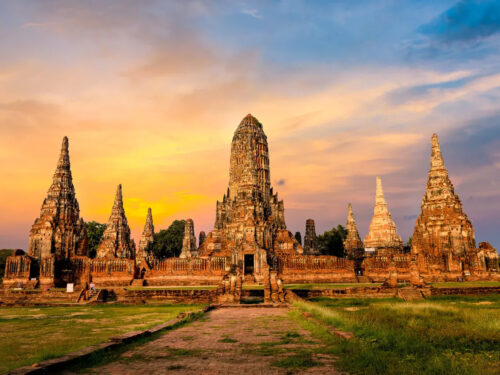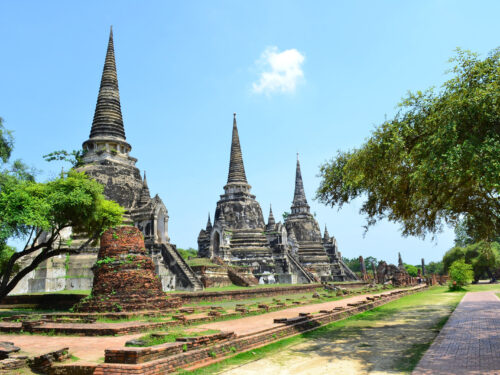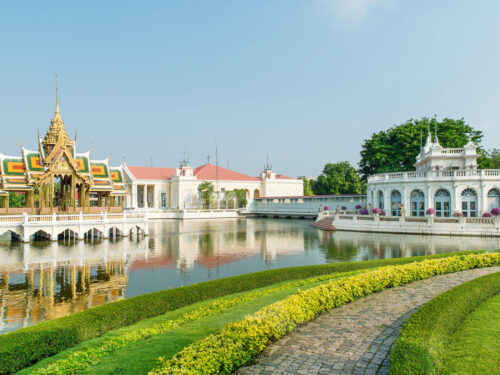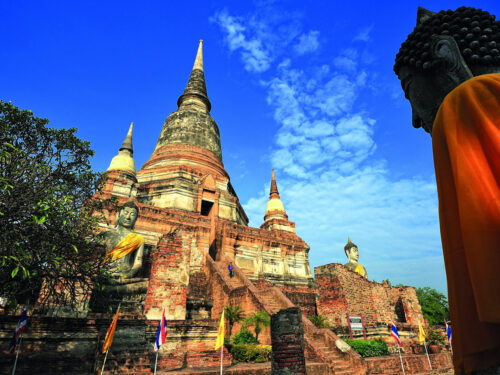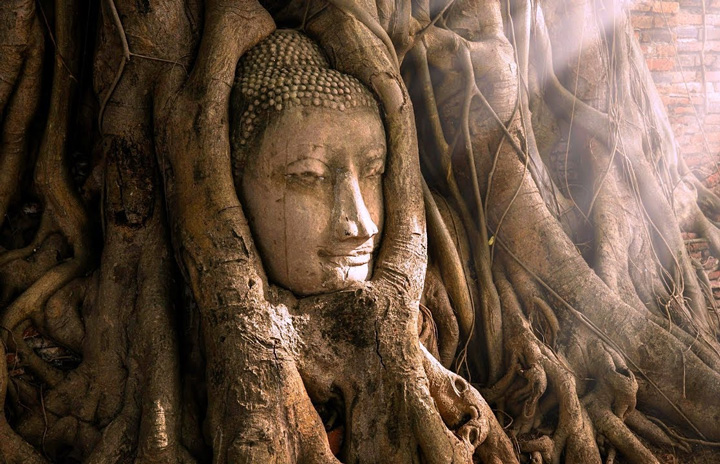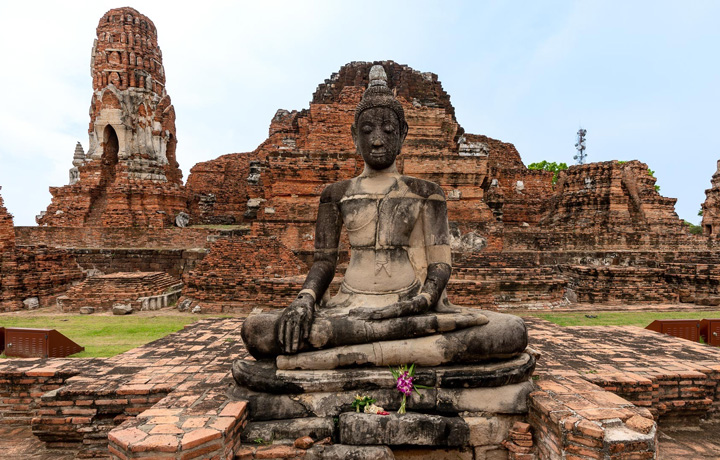Wat Mahathat
Wat Mahathat, also known as the “Monastery of the Great Relic,” is among the most significant and revered temples in Ayutthaya.
Situated on the historic island, Wat Mahathat served as a prominent center of Buddhism during the illustrious era of the Ayutthaya Kingdom. This revered temple not only enshrined precious Buddha relics, but also held the distinction of being the residence of the Supreme Patriarch of Buddhism.
History of Wat Mahathat
Wat Mahathat was originally constructed in 1374 under the patronage of King Boromma Rachathirat I. Its primary purpose was to house Buddha relics, and a grand prang (tower) was erected for this purpose. However, over time, the prang suffered from collapses and subsequent restorations and enlargements. During the reigns of later kings, the temple complex saw the addition of numerous viharns (assembly halls) and chedis (stupas).
Tragically, during the Burmese invasion in 1767, Ayutthaya suffered extensive damage, and Wat Mahathat was not spared. The temple was set on fire, leading to further destruction. The central prang, already weakened by previous collapses, succumbed once again during the early 20th century and has remained unrestored since then.
In 1956, significant excavations were carried out by the Fine Arts Department within the temple grounds. These excavations led to the discovery of a crypt within the central prang. Inside the crypt, a large hollow stone container was found, containing various relics and precious objects. These included votive tablets, gold ornaments, ancient Buddha images, and other valuable items. The artifacts unearthed from the crypt are now exhibited in the Chao Sam Phraya National Museum, providing insights into the rich history and cultural treasures associated with Wat Mahathat.
Wat Mahathat Highlights
Buddha Head in Tree Roots
Perhaps the most iconic and photographed feature of Wat Mahathat is the stone Buddha head entwined in the roots of a Bodhi tree. The image of the serene face emerging from the natural embrace of the roots creates a mystical and awe-inspiring sight.
The captivating Buddha head embraced by the roots of a tree at Wat Mahathat carries with it various intriguing stories of its origin. One such tale tells that thieves, burdened by their loot, left the Buddha head at the base of the Bodhi tree with the intention of returning for it later. Over time, however, the relentless growth of the tree’s roots enveloped the head, encapsulating it in a natural embrace and permanently intertwining the Buddha image with the tree. This enchanting transformation resulted in the captivating sight that draws visitors from far and wide to witness the harmonious fusion of art and nature at Wat Mahathat.
Central prang and surrounding galleries
The temples within Wat Mahathat were meticulously designed to symbolize the profound cosmological beliefs of both Hinduism and Buddhism.
At the heart of the temple complex, the central prang rises majestically on an elevated platform. It serves as a representation of Mount Meru, the mythical cosmic mountain that stands at the center of the universe, surrounded by vast oceans. However, only the expansive base of the central prang remains intact today, as the upper portion constructed with bricks has collapsed over time.
Surrounding the central prang, four smaller prangs grace the corners of the platform, forming a symmetrical layout. Enclosed within this architectural arrangement is a gallery that envelops a serene courtyard. These gallery walls were adorned with countless images of the Buddha, serving as a visual testament to the devotion and reverence for the enlightened one. In the past, the gallery would have been sheltered by a wooden roof, providing a protected space for contemplation and worship.
Viharn Luang
To the east of the central prang, you will find the main assembly hall known as Viharn Luang. This hall seamlessly connects to the western gallery. The main entrance of the Viharn Luang faced east, welcoming the gentle embrace of the rising sun. The structural integrity of this 40-meter-long building relied on two rows of pillars, steadfastly supporting its roof. Nestled at the rear of the viharn, facing the east, rested the principal Buddha image, graciously positioned on a pedestal. Though the test of time has weathered its form, the viharn’s elevated base and sections of the walls adorned with false windows still remain, serving as silent reminders of its past magnificence.
Ordination hall
On the opposite side of the central prang, you will find the ubosot, the sacred hall where novices underwent the sacred ordination into monkhood. While smaller in size compared to the Viharn Luang, it maintains its connection to the gallery in the east. The ubosot is encompassed by eight sema stones, serving as significant markers delineating the sacred boundaries of this hallowed space.
Opening hours
Wat Mahathat welcomes visitors daily from 8 AM to 5 PM.
Entrance fee
The entrance fee for foreign adults is 50 Baht.
Tips for travelers
When exploring the sacred grounds of Wat Mahathat and the other ruins in Ayutthaya, it is essential to observe and respect the established rules and regulations. Due to the sanctity of these locations, visitors are kindly requested to maintain a respectful distance from the tree and the Buddha image. To ensure compliance with these guidelines, a diligent security guard is present, prepared to blow a whistle as a reminder if any visitors inadvertently approach too closely to the Buddha image.
As one of the most important temples in the Ayutthaya Kingdom, Wat Mahathat serves as a window into the glorious past of this once-thriving city. Its historical significance, combined with its captivating beauty, makes it a must-visit destination for those seeking to immerse themselves in Thailand’s rich cultural tapestry.
Tourists’ Reviews
Discover the perspectives of other travelers on the enchanting Wat Mahathat shared on TripAdvisor:
luv4phood
Oldest temple in Ayutthaya
Feb 2023
All of the temples around Ayutthaya are beautiful and worthy of a visit. The main “attraction” at this temple is the head of Buddha in a banyan tree. Make sure to take a walk around the full grounds to appreciate the scale of what was once a magnificent temple before it fell into ruin.
andrew1211
Lovely of course
Oct 2022
Of course, you must come here to see the ancient site, Buddha in the tree (show respect) and soak up the atmosphere and imagine what once was here many years ago.
Other attractions
